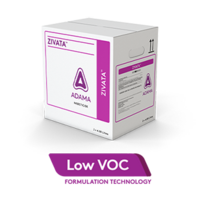
Temperature and Insecticides

Lambda-cyhalothrin insecticides, such as SILENCER® 120 EC and ZIVATA™, target the neuroreceptors of insects, specifically the sodium channel1, causing muscles to cease functioning. However, as temperatures climb (>25C) the biology of insects causes a switch away from using the sodium channel, and when the target of lambda-cyhalothrin products becomes inactive, efficacy drops.
This high temperature - efficacy issue can be a challenge, but “don’t throw the baby out with the bathwater”. Lambda-cyhalothrin based products like SILENCER® 120 EC and ZIVATA™ are incredibly powerful on a wide range of insects, including beetles, which other products/actives can struggle to control. These products also work very quick, and so long as applied when conditions are cooler (early morning or later day) strong control can be achieved.
Please also note that there have been some recent changes to the uses of lambda-cyhalothrin products, which can be found on the updated labels available on the ADAMA website links below. These links also have additional product information, but if any specific questions please reach out.
Referenced Literature: 1 Ion channels as targets for insecticides - PubMed (nih.gov)
Always read and follow label directions.
Drew Thompson - Technical Sales Agronomist (Eastern Canada)

